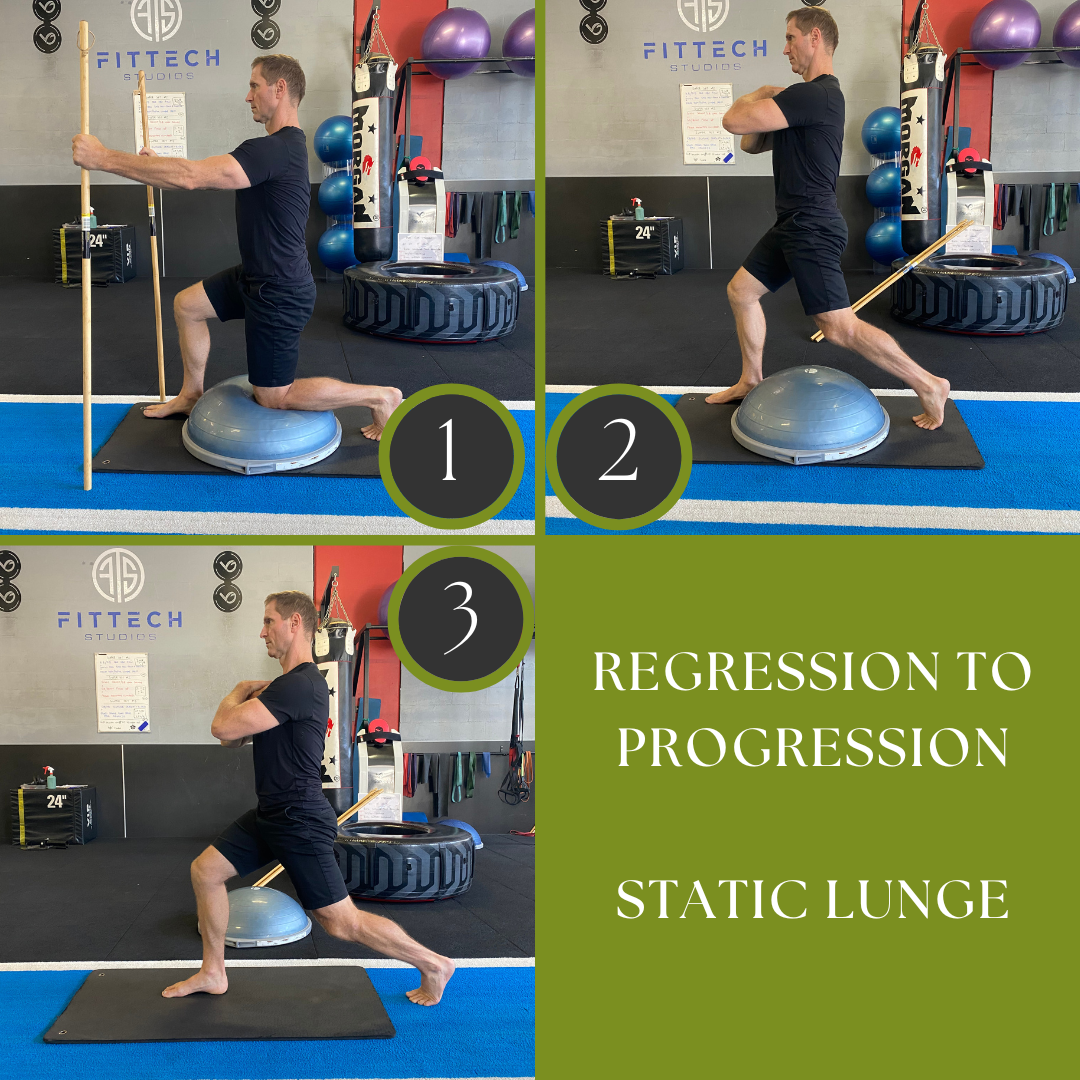Exercise Progression & Regression
From Beginner to Pro: Understanding Exercise Progression & Regression
What is Exercise Progression?
Progression refers to gradually increasing the intensity, duration, or complexity of an exercise over time. This could be increasing the weight, reps, sets, or difficulty of the movement to push the body beyond its current limits.
Benefits of Exercise Progression:
Increased Strength: Progressive overload helps the body adapt and build strength.
Avoids Plateaus: By gradually increasing challenge, progress doesn’t stall.
Enhances Muscular Endurance: Progressing the intensity can improve endurance as muscles learn to sustain longer or harder work.
Boosts Motivation: Seeing improvement through progression fuels motivation, as you can track tangible growth and ability.
When to Progress:
After mastering a movement: When you’ve reached a point where you can complete a certain number of reps with ease, it might be time to increase difficulty.
When the body adapts: If you’ve been lifting a certain weight or performing a certain exercise for weeks, it may be time to add more resistance or change it up to keep the body adapting.
When you’re ready for a challenge: Once you feel confident in a basic exercise or movement pattern, you can increase the difficulty level for further growth.
What is Exercise Regression?
Regression, on the other hand, involves scaling down the intensity or difficulty of an exercise to suit someone’s current abilities or a specific goal (like recovery or a decrease in fitness level).
Benefits of Exercise Regression:
Injury Prevention: By modifying exercises to be easier, you reduce the risk of strain or injury.
Promotes Consistency: Even when someone can’t perform a particular exercise at full intensity, a regression allows them to keep working out and building consistency.
Accommodates Different Fitness Levels: Not everyone starts at the same level. Regressing exercises allows individuals of varying levels to progress at their own pace.
Supports Recovery: After injury, illness, or burnout, a regression allows someone to maintain or regain their fitness without pushing too hard.
When to Use Regression:
When recovering from an injury: If someone has an injury or limitation, regressing to a simpler movement allows them to safely build strength again.
If a person is new to exercise: Beginners often need easier variations of exercises as they build foundational strength and coordination.
During periods of fatigue: When you're feeling burned out or tired, regressing exercises can allow you to still work out without overtaxing your body.
When focusing on technique: Sometimes it’s better to regress to a simpler version of a move to ensure proper form and avoid bad habits that might lead to injury later
Practical Examples of Progressing through Regressions without Equipment
Squat
Knees to wall → Sit Squat → Free Squat → Goblet Squat → Overhead Squat
Deadlifts
Buttock to wall → Kneeling deadlift → Suitcase Deadlift → Conventional Deadlift → Single Leg Deadlift
Lunge
Knee to wall → Stationary Lunge → Assisted Lunge → Free Lunge → Raised Knee Lunge → Stepping Lunge
Twist
Side to wall (shoulder to back) with arms across body → Side to wall (shoulder to back) with arms open → Supine Torso Twist → Supine Torso Twist with Hold
How Progression & Regression Benefit Different Groups
Beginners: For someone new to working out, using regressions will allow them to perform exercises with proper form, increasing confidence and building a foundation for progression later.
Intermediate/Advanced Athletes: These individuals will benefit from progression as they work to continually challenge their bodies to improve strength, endurance, and skill.
People with Injuries or Special Considerations: Tailoring exercises with regressions ensures they can continue training while working around injuries or restrictions.
Seniors: Older adults often need regressions to maintain safety while staying active and healthy, allowing them to work on stability and mobility.
Conclusion:
Exercise progression and regression aren't just strategies for “easier” or “harder” workouts; they’re tools for smarter, safer, and more effective fitness journeys. Knowing when to use each and how to tailor your exercises can maximize your workout results, prevent injury, and help individuals meet their personal goals at any stage of their fitness journey. By embracing these principles, you'll ensure consistent progress, no matter where you or your clients start from.
Call to Action:
Assess your current fitness level and identify where you can progress or need to regress to improve technique and strength.
Explore your workout routines and experiment with different modifications to see how these principles can enhance your training.
Follow us on Facebook or Instagram for the videos for some above examples.


